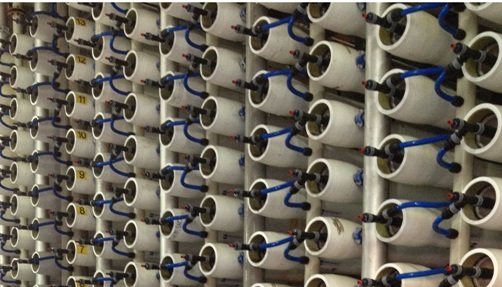
Shortage of fresh water in number of regions in the World urge construction of water purification utilities and particularly sea water desalination plants. Reverse-osmosis is one of the most popular technologies used today for a large scale water desalination measured by millions of cubic meters/year. Reverse osmosis process removes salts and impurities from sea water by pushing it through membrane filters under pressure. One of the main components of the desalination reverse-osmosis process are fiber reinforced plastics (FRP) pressure vessels that are used as pressure housing of reverse-osmosis filters. Typically there are hundreds of such pressure vessels in each facility connected serially into trains. FRP vessels are typically several meters long and operate under relatively high pressure.
Failure of FRP vessels during operation can occur in different ways. One of the common failure scenarios is leak before burst which results in two types of leaks: high pressure “spraying” leaks or small “bleeding” leaks. But another type of failures can lead to catastrophic circumstances. There are recorded cases of catastrophic rupture of vessels before a visible leak could be detected. Such violent failure may result in large parts of vessels flying and endangering people around. Failures of vessels also interrupt operation and lead to significant economic losses if occur often and randomly.
Diagnostic Acoustic Emission technology is an effective tool for on-line diagnostics and monitoring of FRP vessels used in reverse-osmosis process because:
- Easy to install system with few sensors only can be used for inspection of entire vessel under normal operational pressure.
- AE detects effectively matrix cracking, delamination growth and fiber breakage and can identify flawed vessels long before they fail.
- Using special AE analysis methods it is possible not only to detect flaw indications but to distinguish between them and assess their significance to the structural integrity of the vessel.
- In addition to flaw related activity, AE technology is used to detect leaks those difficult to identify by other means.
- Once defective vessels are identified, they can be effectively monitored to the moment when replacement is required.